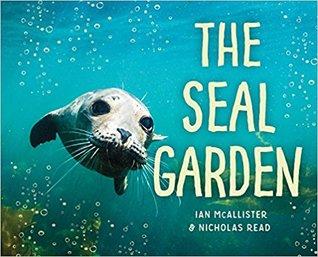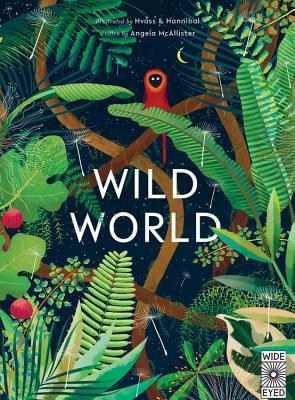
scrounge: /skrounj/ informal verb: to actively seek [books] from any available source

Sakura's Cherry Blossoms is a sweet story about a girl who has to leave her home in Japan, including her grandmother. She and her grandmother used to sit together and eat under a cherry tree as it blossomed, and in America she does not see any cherry trees. Learning English and making friends are difficult things that she has to navigate in this new place.
The story touches on feelings of loss, not just of place, but of people we love (it doesn't specifically mention that Sakura's grandmother dies, but she does go back to visit her one last time to say goodbye, so it is assumed).
In the end, Sakura is sad but makes a friend, and learns to find things in her new home that help her remind her of her grandmother -- especially when spring comes and she realizes that some places in the US have cherry trees too!
The last page of the book explains that this story is written entirely in the "tanka" style of Japanese poetry, which is similar to haiku but includes two longer lines at the end as well. The phrasing and structure of some of the lines made more sense to me after this.
(In compliance with FTC guidelines, I disclose that I received this book for free through LibraryThing Early Reviewers. I was not required to write a positive review.)
Scrounged From: A LibraryThing giveaway
Format: Hardcover
Author: Robert Paul Weston
Illustrator: Misa Saburi
Pages: 40
Content Advisory: Sakura misses her grandmother and expresses sadness about leaving her (death is not explicitly mentioned, but illness is).

The photography in The Seal Garden is stunning. I love it when books use photographs of familiar creatures to introduce us to very specific places. This book covers "the seal garden," a special area of underwater vegetation in the Great Bear Sea off the coast of British Columbia, where seals and other animals can go to be safe from storms and predators.
There are some really lovely shots here, of seals swimming around under and above the water. My favorites were the pictures of shafts of light spreading through the water and plants. You get the feeling that this book was created by people who genuinely know and love the area, and is not just another "general nature information" project.
The text focuses on describing some of the animals that live in this environment and some of the things they may experience on a daily basis -- sheltering from a storm or a group of hunting orcas, eating fish, lounging on rocks, etc.
My only complaint is that I didn't see that the book ever actually tells us where the Great Bear Sea is, other than mentioning the Pacific Ocean. Since I'm not from the Pacific Northwest, the name was unfamiliar to me, so it's unfortunate that I had to resort to Google to figure out exactly where this place is located -- even a simple map would have been very helpful.
(Thanks to NetGalley for the review copy.)
Scrounged From: NetGalley
Format: Kindle
Author: Nicholas Read
Photographer: Ian McAllister
Pages: 32
Content Advisory: None

Simon and the Big, Bad, Angry Beasts is a story about a boy who expresses his anger in harmful ways, which begin to manifest themselves as progressively meaner beasts that lash out at his friends and family. Though it feels good at first, Simon eventually realizes that his beasts are not making things better -- in fact, they're making it so that no one wants to be around him. By learning to be more calm and mindful, he is able to find a healthier way to deal with his anger.
I think this story works very well as a parable of sorts, and though I can't personally speak to its effectiveness, I can see how it could be useful in helping to give children a visual and fantastical perspective on how unmanaged anger can hurt others and them. I don't know whether or not this would be the kind of story I'd just randomly pick up to read with a child who doesn't struggle with anger -- I see it as more of a teaching tool, but it looks like a good one.
The story focuses a lot more on the anger part than on the management -- it wraps up rather quickly and somewhat abruptly, but the book does include a lot of explanations, tips, and encouragement in the end notes about how it can be used to help children who need it, so hopefully this will be a valuable tool for parents and educators.
(Thanks to NetGalley for the review copy.)
Scrounged From: NetGalley
Format: Kindle
Author/Illustrator: Ian De Haes
Pages: 40
Content Advisory: None

I really enjoyed Wild World, a collection of poetry about many of Earth's most recognizable wild places that contain animal habitats. The poetry is paired with lovely, colorful illustrations featuring many animals found in each type of place.
The poetry contains some wonderful imagery and metaphor, and as such is probably beyond preschoolers, but for older children and adults this is a lovely way to learn and be reminded about these animal habitats, and references to the food chain help prevent these vignettes from becoming romanticized. There are some general environments covered here such as jungles, deserts, mountains, etc., but also some more specific ones such as moorlands, mangroves, and the Australian Outback.
(Thanks to NetGalley for the review copy.)
Scrounged From: NetGalley
Format: Kindle
Author: Angela McAllister
Pages: 32
Content Advisory: None

I Love My Hair! is a book that portrays a girl named Keyana getting her hair brushed by her mother. It hurts and she doesn't like it, but when her mother is done, she reminds her that her hair is beautiful and she can wear it in any style she chooses.
This is a celebration of African hair, and I love the visual metaphors of different styles, such as "cornrows" showing her hair blending into a cornfield -- we also see other styles such as braids with beads, and the natural style, described as letting her hair go "any way it pleases."
Toward the end, the voice changes to Keyana's: "I love my hair, because it is thick as a forest, soft as cotton candy." She says her favorite style is one ponytail on each side of her head, like wings, and that one day she might take off and fly!
Scrounged From: Our local library
Format: Paperback
Author: Natasha Anastasia Tarpley
Illustrator: E.B. Lewis
Pages: 32
Content Advisory: None

